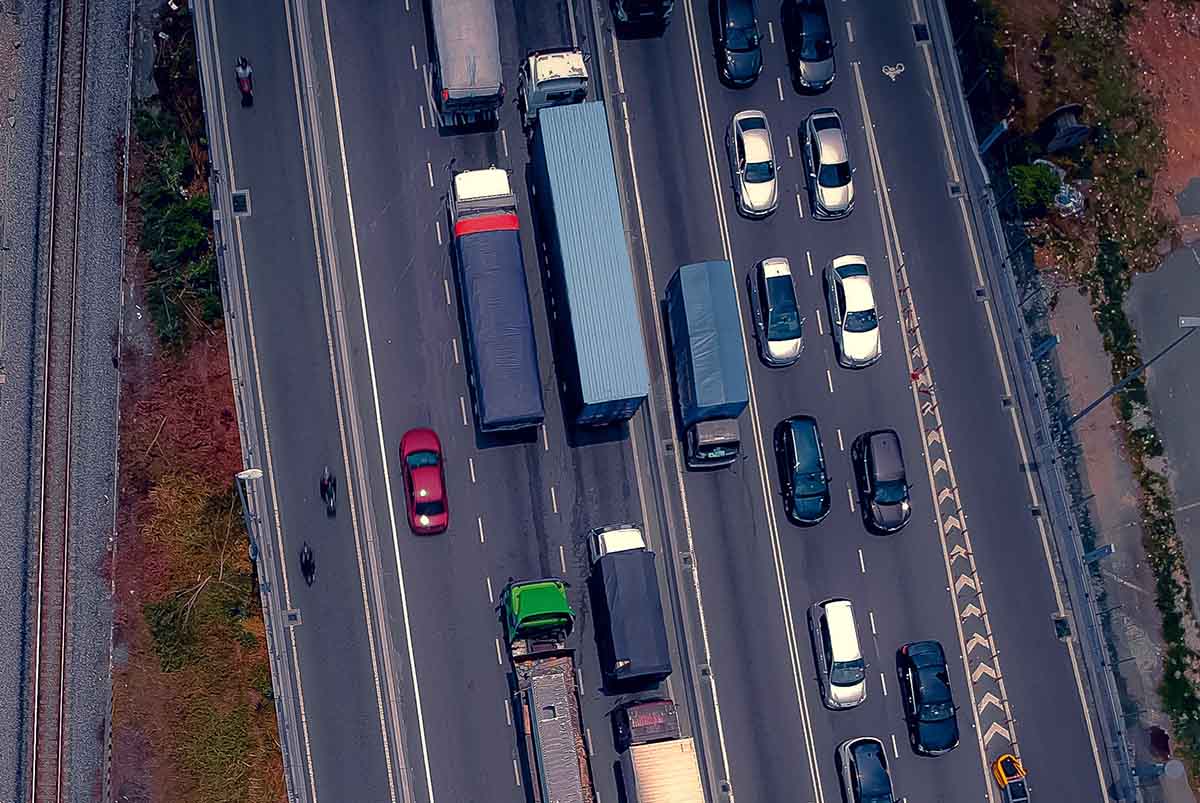Trucks of all shapes and sizes take to the roads every day in Los Angeles, particularly on the highways transporting cargo ranging from ketchup to boats to windmill parts. The interstate highway system is a marvel for these trucks allowing them to move products from Point A to Point B in the most direct way possible at highway speeds.
The sheer size of these trucks, however, makes them particularly lethal in accidents on those highways. Even a lightweight truck can weigh as much as 10,000 pounds or 5 tons while an 18-wheeler can weight up to 40 tons or 80,000 pounds. The average semi-truck is 72 feet long, 13.5 feet tall and 8.5 feet wide and weighs 35,000 pounds empty. Truck accidents are not just caused by 18-wheelers, however. Dump trucks, garbage trucks, tanker trucks, tow trucks, cement trucks, delivery trucks, and flatbed trucks are all large and capable of maximum destruction in an accident. A 5 or 40-ton object hurtling through space at 70mph is bound to cause significant damage if it encounters any type of obstacle.
In California in any given year, there are approximately 100 or more truck crashes that cause fatalities of other drivers and anywhere between 200 and 300 truck drivers lose their lives in accidents. Given Los Angeles County’s plethora of highways, it is also the site of the majority of truck accidents in California in any given year with most of those accidents happening on I-5 and I-10.
As with other types of road accidents, there are multiple factors that cause truck accidents. The most common cause of truck accidents is driver fatigue leading to the driver to fall asleep at the wheel. For truck drivers, fatigue is a major concern and contributes to up to 13 percent of crashes each year. Driver fatigue occurs for several reasons. In general truck drivers sleep less than five hours a night when the recommendation is for at least seven to nine. In addition, some 27.5 percent of truck drivers suffer from insomnia. The mental exertion required to drive for long periods of time also causes fatigue as does the monotony of driving.
Driving while fatigued is effectively the same as driving with a blood alcohol level of 0.08% and causes lane shifting, poor decision making, tunnel-vision, and can cause the truck driver to have slower reaction times. The combination of this level of impairment and a very large, very heavy truck driving at fast speeds is usually deadly. While the federal government has attempted to address driver fatigue through reducing the maximum workweek allowed for drivers and mandating rest breaks every eight hours, driver fatigue is still a very real problem.
Other causes of trucking accidents include
- Poor training of drivers
- Negligent hiring of drivers by trucking companies
- Poor vehicle maintenance
- Poor cargo loading, and
- Driving under the influence
It is worth noting that anyone in California driving a truck that would require a commercial drivers license (CDL) even if they do not hold a CDL is limited to driving with a blood alcohol level of 0.04 percent whereas drivers of passenger vehicles are limited to 0.08 percent.
Perhaps a less expected cause of many truck accidents is not the truck drivers themselves but rather the passenger vehicles around them. For example, drivers of passenger vehicles and pick up trucks enjoy easier maneuverability and better pick up speed than trucks simply because of their much smaller size. Many passenger car drivers use these advantages when driving behind or next to big rigs without fully appreciating the size and braking requirements of those trucks resulting in rear end accidents because the driver of the car cut off the truck driver giving them little to no time to brake to avoid an accident.
Also, drivers of passenger vehicles often do not appreciate that the large truck they are trying to get around has blind spots where the driver cannot see the cars around it. This leads to the passenger car getting caught between the truck attempting to turn or merge into a lane and a guardrail or other barrier with the truck winning the contest. Finally, many fatalities are caused by passenger car drivers not paying attention and driving into the back of trucks. Despite the advent of underride guards (or Mansfield bars so named after Jayne Mansfield died in such an accident) that are designed to prevent cars from completely driving under trucks, there are numerous accidents each year which are compounded by the speeds at which the passenger cars are driving.
Filing a lawsuit following an truck accident with a big rig is also more complicated than your average car accident suit. Whereas in a personal vehicle accident, it is usually pretty clear who owns the car and maintains the insurance on it, with trucks it can be much more difficult to make this determination. Oftentimes, trucking companies lease and sub-lease trucks making it difficult to pinpoint who is financially liable for the accident. Also, the driver of the truck may be an independent contractor who is hired on an as-needed basis by the trucking company and not covered by their full insurance policy.
Determining who is liable for truck accidents is particularly important since the injuries sustained in these types of accidents are typically much more severe than in passenger car accidents because of the factors discussed above: the sheer size and weight of the trucks and the fact that they usually occur on a highway when one or both vehicles are driving at high rates of speed.
For these reasons, if you are ever involved in a truck accident, it is recommended that you immediately contact a qualified, skilled, and experienced Los Angeles personal injury attorney who specializes in trucking accidents and understands how cases like these work in the judicial system. Failing to do so can mean losing out on thousands if not millions of dollars in recovery for injuries and damages. It is vitally important to find a PI attorney who has experience and a proven track record handling trucking accidents to ensure that you are in the best possible hands in a terrible situation.






